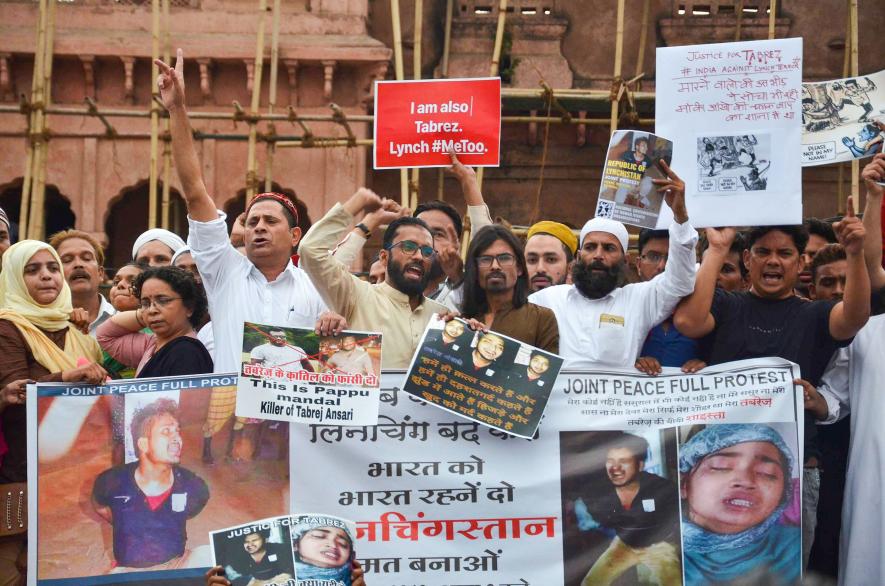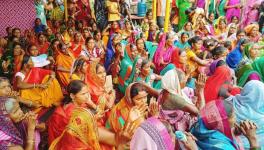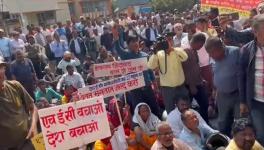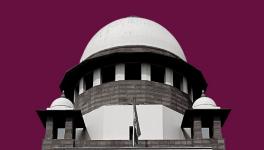Tabrez Ansari’s Lynching in Jharkhand: A Case of Flip Flops and Botched-up Probe

Image credit: PTI
New Delhi: Tabrez Ansari, 24, had returned home in Jharkhand’s Seraikela-Kharsawan district for his marriage, which was solemnised on April 26, 2019. But little did he know that his marital life would be short-lived. He was assaulted by a lynch mob on suspicion of bike theft and later succumbed to his injuries.
His wife, Shaista Parween, now 23, not only lost her husband but also her first child because of stress and weak health. The dual loss shattered the life of the newly married woman.
It was Eid and he, along with his two friends, had gone to his hometown at Kadamdih — where he visited occasionally on festivals to meet his aunt. While returning, he was stopped and surrounded by a mob at around 10 pm on July 19 at Dhatkidih, a locality in Jamshedpur, East Singhbhum district.
The mob got a hold of him while his friends somehow managed to flee. Accusing him of stealing a bike, the mob reportedly began mercilessly beating him up. He was tied to an electric pole and assaulted for around eight hours, according to reports. The murderous mob also made him chant ‘Jai Shri Ram’ and ‘Jai Hanuman’.
The act was recorded on camera and later went viral on the Internet. The same video recording, which was made to float on social media to display the mob's ‘bravado’, turned out to be a major piece of evidence that led to the conviction of 10 of the 13 accused.
A sessions court in Seraikela-Kharsawan convicted Mahesh Mahali, Prem Chand Mahali, Atul Mahali, Vikram Mandal, Prakash Mandal, Chamu Nayak, Madan Nayak, Sunamo Pradhan, Kamal Mahato and Bhim Singh Munda on June 27.
Their sentencing will be announced on July 5.
While one of the rest of the three accused died during the trial that went on for four years, two were acquitted on the ground of lack of evidence.
Additional Session Judge (1st) Amit Shekhar found them guilty under Sections 295(B) (destroying and damaging a place of worship), 304 (1) (culpable homicide not amounting to murder), 147 (rioting), 148 (rioting, being armed with a deadly weapon), 149 (unlawful assembly) and 325/34 (voluntarily causing grievous hurt with common intention) of the Indian Penal Code (IPC).
“We will demand in the court that they be sentenced to life imprisonment,” Advocate Altaf Hussain, who was assisting the prosecution as an informant lawyer, told NewsClick.
Asked why they were not convicted for murder, he said the intention or the motive of the crime must be clear beyond any reasonable doubt to hold the accused guilty under Section 302 of the IPC.
“It can be commented upon only after the detailed judgment is pronounced. So, let’s wait for July 5,” he said.
As the assault began, an onlooker had purportedly informed the police from the crime scene. But the cops reached the spot at around 7.30 am the next day.
Ironically, the victim was arrested for alleged theft and then taken to a primary healthcare centre (PHC) where the victim was administered just first aid. Despite suffering grievous injuries, he was discharged and then sent to jail.
After two days, Ansari complained of severe pain — including a headache. He was taken to the government hospital from the prison, but the doctors there allegedly did not treat him well. He was even declared dead while he was alive. It was too late when he was rushed to another doctor.
Ansari died on June 22.
A SAGA OF NEGLIGENCE, BOTCHED-UP PROBE
Based on initial autopsy report, which identified cardiac arrest as the immediate cause of death, the police dropped the murder charge from the chargesheet and made it a case of culpable homicide not amounting to murder.
As a result, the police drew global criticism. Following an outrage, a panel of doctors was later constituted to review the autopsy report. Debunking the initial post-mortem report, the experts concluded that the deceased had suffered a fracture in his skull. They also found blood clots in his heart.
Following this report, Section 302 of the IPC was restored by the investigators while filing a supplementary chargesheet.
Despite the fact that they were informed about the assault as it had begun, the police took about nine and a half hours to reach the spot.
Had they intervened in time, Ansari would have been alive today.
It seems, to save their skin, the police defended the delayed arrival by referring to an attack by Maoists on a police party. The ambush — wherein five policemen were killed — had taken place three days before the incident.
Following the Maoists’ attack, the Jharkhand police directorate had directed its personnel to avoid “loose” movement at night until a given piece of information is verified.
Instead of taking Ansari to Sadar Hospital or any other multi-speciality hospital, he was taken to a PHC where the doctor let him go after first aid.
The grievously injured Ansari was sent to prison. Neither the doctor who attended him at the PHC nor the police made any effort to save the victim’s life.
The probe got momentum only after the then Seraikela superintendent of police was transferred out, and S Kartick took over.
He camped in the village and conducted a series of raids. As a result, 11 accused were taken into custody. The video footage of the assault was seized and sent to the Central Forensic Science Laboratory for analysis.
Disciplinary actions were initiated against the erring police officials, including the officer in charge of the Seraikela police station.
The medical officer who attended Ansari was held responsible for negligence in his treatment.
‘THE KILLERS MUST SUFFER AS MY HUSBAND DID’
Meanwhile, nothing less than a death sentence for the killers is expected by Ansari’s widow Parween.
“I won’t sit still till they are hanged. They took away my life; they don’t deserve to live. I want to see them suffer like I have been suffering over the past four years,” she told NewsClick over the phone.
She said even if, for argument’s sake, he (Ansari) had committed some crime, they could have caught and handed him over to the police.
“But they acted like a judge, jury, and executioner. He was alone. He begged for life, but the assaulters did not listen to him. He was unable to defend himself as he was tied to a pole. They kept beating him for hours as if he was not a human being,” she recalled, with her voice choking.
Parween was married to Ansari for just two months before he died.
“Let them have the same fear on their faces that I saw on my husband’s face when I met him in jail,” said an enraged Parween.
Get the latest reports & analysis with people's perspective on Protests, movements & deep analytical videos, discussions of the current affairs in your Telegram app. Subscribe to NewsClick's Telegram channel & get Real-Time updates on stories, as they get published on our website.
























